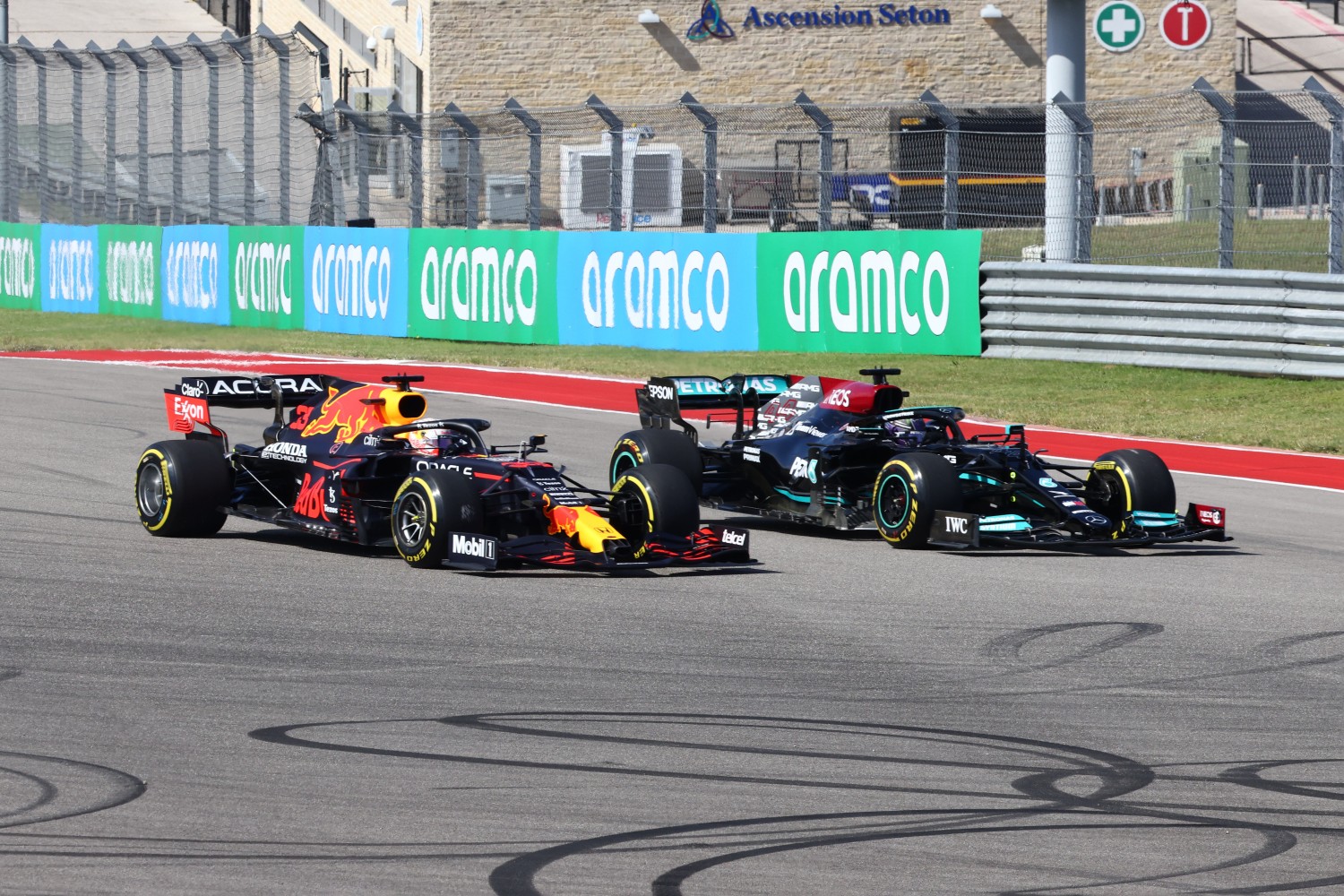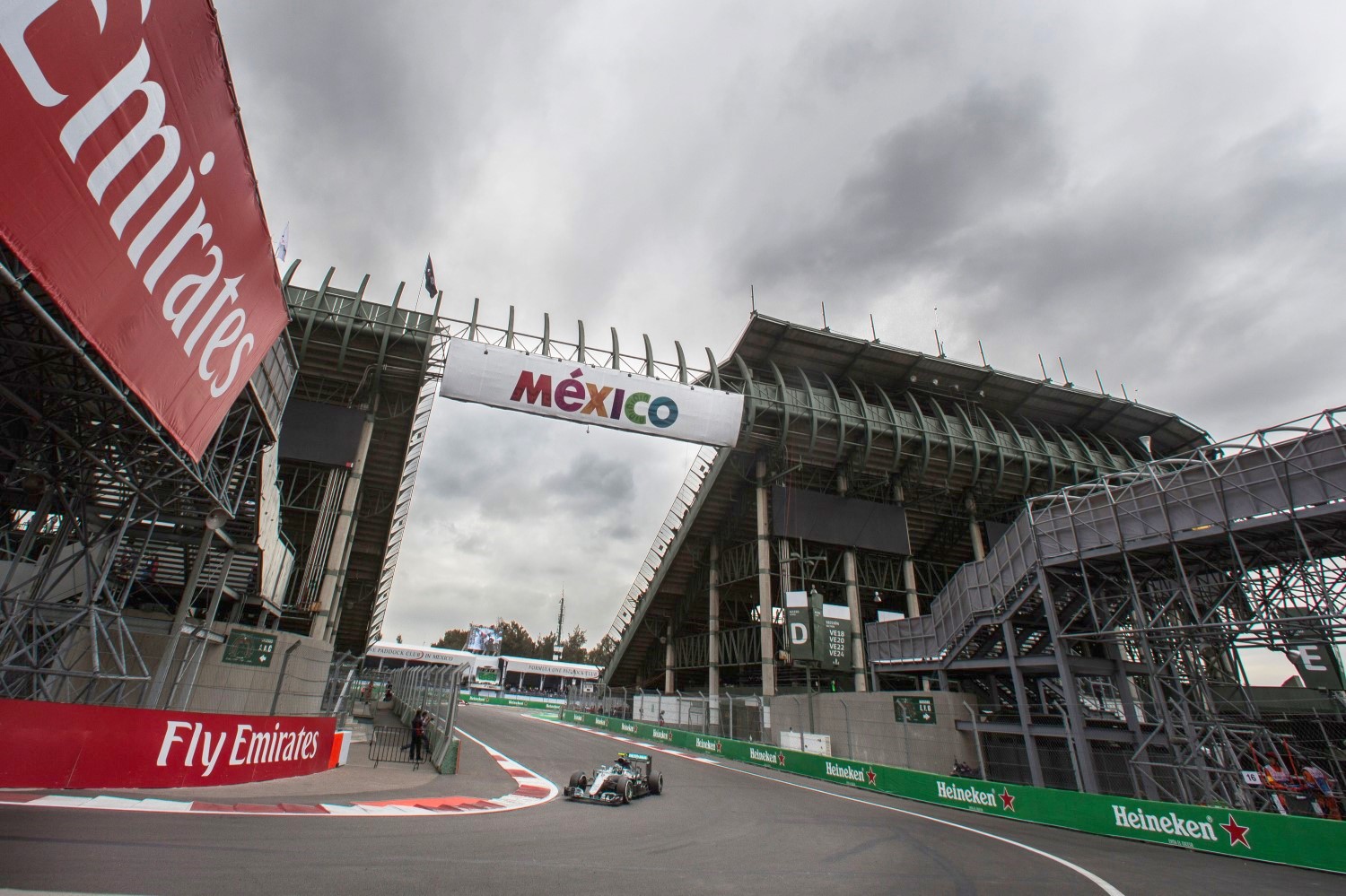F1: Mexico City Grand Prix Preview
The F1 Teams are ready for the latest triple-header with a trip south of the border to the Autódromo Hermanos Rodriguez for the Mexico City Grand Prix, Round 18 of the 2021 FIA Formula 1 World Championship.
Nestled within the dense heart of Mexico City, the Autodromo Hermanos Rodriguez, located in the eastern suburbs of Mexico City, has had several spells on the Formula 1 calendar, returning for its most recent stint in 2015, having first debuted in 1963.
The opening phase of the lap is dominated by two lengthy straights, connected by a complex of 90- degree corners, while a slow-speed sequence of turns opens up into a series of high-speed esses. The circuit’s unique centerpiece is the Foro Sol stadium. Since the circuit’s renovation for Formula 1’s return in 2015 a section of track takes drivers through the Foro Sol, beneath thousands of enthusiastic supporters, and where the likes of Sir Paul McCartney, U2 and The Rolling Stones have played to capacity crowds.

Mexico City’s high altitude also poses another challenge for teams and drivers. At over 2,200 meters above sea level it is comfortably the highest circuit visited by Formula 1, meaning the air has less density, almost 25 percent less so than circuits at sea level. It affects both aerodynamic and power unit prowess, with the reduced downforce affecting cornering speed and braking potential, while the turbo has to work harder, influencing temperatures and cooling.
Even if large rear wings typically utilized in Monaco are run in Mexico City then only downforce levels typically experienced at Monza are achieved. That results in some of the fastest top-end speeds of the season along the circuit’s lengthy main straight, with up to 370km/h possible in a slipstream, and also has an impact on tire wear, particularly through the middle sector of the lap.

Championship Battle
The last race in Texas was more proof of just how intense this championship battle is. It’s challenging, it’s pushing both teams to higher levels and the positive pressure both teams are putting on themselves is making this a hugely enjoyable fight. We wouldn’t have it any other way.
Lewis Hamilton put together a perfectly executed charge on the alternative strategy, to try and snatch the win away from a very quick Max Verstappen in Austin. It wasn’t enough in the end, and Lewis was relentless in his chase for the win.

The teams are all excited to be back in Mexico City, it’s such a vibrant place, full of character, and they always receive a warm welcome. They’re looking forward to being back there, and the atmosphere at the track is always electric.
Red Bull have gone well there in the past, and it hasn’t been Mercedes’ strongest circuit. But this year has shown that anything is possible and circuits where you were previously weak, you are suddenly strong, and vice versa. So, it adds a layer of unknown in the build-up, which only increases the excitement.
If you want to bet on the Mexico City GP, or on the championship, a good place to do it is at Louisiana sports betting F1 odds for fans
Local Hero
In a teeming metropolis of more than 20 million, one face and one smile stands out on billboards and on television this week in Mexico City: Formula One driver Sergio Perez.
Mexico’s favorite racing son is back, this time with a chance to win his home race at the Mexican Grand Prix on Sunday, while his Red Bull teammate Max Verstappen and Mercedes’ Lewis Hamilton battle for the season championship.
F1 hasn’t raced in Mexico City since 2019. In years past, thundering chants of “Checo! Checo!” poured out of the massive grandstands at the Autodromo Hermanos Rodriguez, even when Perez was just scrapping for a top-10 finish.

He returns this week with a car capable of a podium finish and maybe even a victory that could turn those cheers into rapture. “A podium would be amazing, it´s the least that the country deserves,” Perez said. “We are in Red Bull now and the support is even bigger this time around.”
The souvenir zone at the track typically has sales tents featuring special Perez merchandise, usually located not far from those dedicated to Ayrton Senna, the Brazilian racing legend who was killed in 1994.
Keys to the Race
- The altitude effect is a key part of racing in Mexico and affects car performance in multiple ways. Lying at 2,240m above sea level means the air pressure is lower, so both the drag and downforce produced by the cars is reduced. This creates a challenging car set-up conundrum for both team and driver.
The C2, C3 and C4 mid-range tires have been allocated for the 10th time this season, and, while familiar, the Soft tire usually experiences high degradation. While it requires extra management in the race, picking the correct tires in Saturday’s Q2 can prove influential to success on Sunday. Expect teams to differ in strategy, with one- and two-stop strategies both proving successful in the past.
Despite three DRS zones and the second-longest run between the start and the first braking zone (after Sochi), overtaking difficulty is considered above-average. There were just 40 and 36 overtakes in 2019 and 2018 respectively, with DRS required for over 70% of passes, reflecting the challenge of making a move outside of DRS zones.

Unlocking the Lap
It’s a 1,200m run down to Turn One, where drivers hit speeds of 370km/h (230mph) before the quickfire right-left-right of Turns One to Three, often while holding off a rival’s advances.
It’s a similar story for the next section: a long straight broken up by another quick left-right, followed by the double-apex Turn Six.

The slow exit gives drivers a breather before the next challenge. Turns Seven to 11 swing from right to left at speeds of over 200km/h (136mph) without a moment’s respite, like Suzuka’s famous opening sector.
Turn 12 is no longer the beginning of the famous banked Peraltada curve, but provides a distinct change of pace: into the stadium section, drivers drop from over 300km/h (186mph) for a slow and technical series of corners.

It’s a tight entry point, which can catch drivers out, but the real challenge is the braking point for Turn 13, which, after clipping the inside curb, sets up the run through Turns 14 and 15 to exit the stadium.
Turn 16 rewards good traction, and the key is to hit the curb on the inside before powering through the following corner and back onto the start/finish line.

What Impact Does High Altitude Have on an F1 Car?
While it’s easily forgotten in the heat of a wheel-to-wheel battle or stunning pole position lap, the performance of a Formula One car and the ability for it to even run is largely down to the many, many invisible air particles floating around us.
Many of the F1 tracks that we visit are fairly close to sea level, and in Zaandvort’s case very close, so the air density and altitude are pretty similar. But Mexico is an outlier. It has the highest altitude of any circuit and by quite some margin, situated 2,285 meters above sea level, five-times the height of the PETRONAS Twin Towers in Kuala Lumpur.
And that change in altitude has a surprisingly large effect on many elements of an F1 car, changing how it performs and operates…
How does Mexico’s altitude level compare to other F1 locations?
The Autodromo Hermanos Rodríguez is located to the south-east of Mexico City’s center, with an ambient pressure of just 780hPa – normal sea level is around 1,000hPa, so it’s roughly 20% less. Despite its high altitude, it is one of F1’s flattest tracks with an elevation change from the lowest to highest point of just under 3 meters. This is partly because Mexico City sits in the ‘Valley of Mexico’ on a former lake bed.
When it comes to the highest altitudes of other F1 tracks, none come close. In fact, the Mexico City venue is located nearly 1,500m higher than the next circuit on the list, which is Interlagos, measuring in at 800m above sea level.
So while the weather and temperatures experienced at the Mexico City Grand Prix aren’t especially different to other race weekends, the atmospheric conditions are unique and provide teams with some rare challenges to tackle.
Why does high altitude impact the car?
Altitude impacts everything that we do, whether it’s going for a run around Mexico City or a turbocharger pumping oxygen into the engine of a car. And it’s all related to the amount of air particles and the density of the air at that specific height.
The higher you are in the atmosphere, the thinner the air is. This is because air has weight and so the closer you are to sea level, the more the air is being compressed downwards, meaning denser air and more air particles. At 2,285 meters above sea level, there is around 25% less air density compared to at sea level and therefore a quarter less oxygen.
When you think about an F1 car, there are many crucial factors that ensure it operates correctly, three of which are: aerodynamics, cooling and the Power Unit. These elements are greatly impacted by the amount of air available to them and therefore, less air means differing performance.
High altitude doesn’t directly impact the racing itself because everyone is impacted in the same way and the long main straight and two DRS zones early in the lap do promote overtaking. However, different cars will be impacted by the effects of the altitude in different ways, some faring better and some faring worse, which can mix up the competitive order in Mexico.
How does altitude affect the aerodynamics of the car?
Because of the thin air, the drag of a Formula One car in Mexico City is much lower. There are fewer air particles for the car to move out of the way, so the car cuts through the air quicker and with less disruption. This is why the cars are so fast on the straights in Mexico, with a maximum speed higher than Monza (350 km/h) whilst running wings as big as the ones we use in Monaco.
However, fewer air particles also have the impact of less downforce being generated, as there is less air pushing the car into the ground. In fact, the downforce loss is around 25% in Mexico because of the altitude. As a result, the highest downforce specification – Monaco level of wing – is used but this is generating the same level of downforce (or even slightly less) as the Monza wing because of the lack of air density.
Aero grip is therefore pretty low in Mexico, but you can run a big wing without the penalty of drag, so top speeds are very high.
What impact does this altitude level have on the Power Unit?
If we were talking about naturally aspirated engines, the performance difference at a high-altitude track would be much higher, as it relies on oxygen being drawn into the engine to complete the combustion process. This would produce a 25% performance loss, but on the modern-day F1 Power Units this is avoided thanks to the Turbocharger.
This is because the Turbo spins at an incredibly high speed to pump more air into the engine – around three times more air, in normal altitude conditions. More air means you can pump in more fuel and therefore generate more power. In Mexico, the Turbo has to work harder to compensate for the lower air density and it does this by spinning at a higher speed, in its attempt to make up some of the performance loss.
However, it can’t make all of the performance difference up. Working the Turbo 20% harder just isn’t possible – there isn’t the margin left because they are designed and built for normal race conditions, not the unique ambient pressure of the Autódromo Hermanos Rodríguez. So, there is still a sizeable reduction in Power Unit output, but the lower drag helps make up for that and propel the cars to these incredible maximum speeds on the Mexico City track’s long main straight.
There is also less harvesting from the MGU-H in Mexico because less air into the engine means less power and less exhaust gasses for the MGU-H to recover and turn into useful energy. Some manufacturers will fare better than others depending on the size of their Turbo and the layout of their Power Unit system.
And why is cooling impacted by high altitude?
The way F1 cooling works is the cooler air particles pass through the cooling intakes, picking up the heat from the components before being dispersed out of the back of the car as hot air. A higher altitude means less air is passed through the radiators, air intakes and ducts which results in less cooling, meaning the various elements of the car such as the Power Unit and brakes run hotter or require much larger ducts to get things sufficiently cooled down.
Obviously, teams try and open up the car’s cooling outlets as much as they can, increasing the size of the air intakes and ducts to bring more air particles in, but this also reduces the aerodynamic performance and increases the drag of the car, so a balance has to be found between the two.
Cooling the car appropriately is probably the biggest challenge in Mexico. For the Power Unit, the lack of mass flow of air limits the cooling potential, which requires careful management to ensure reliability. And overheating brakes can lead to accelerated wear or glazing (where the surface is burnt off, turns shiny and therefore drops friction). Furthermore, the turbo spinning at higher speeds causes additional mechanical strain on the turbine and compressor elements. These are all delicate issues that teams have to consider, monitor and react to, which all add to the excitement and challenge of the Mexico City Grand Prix.
2021 Mexico City Grand Prix Timetable
| Session | Local Time (CST) |
| Practice 1 (Friday) | 11:30-12:30 |
| Practice 2 (Friday) | 15:00-16:00 |
| Practice 3 (Saturday) | 11:00-12:00 |
| Qualifying (Saturday) | 14:00-15:00 |
| Race (Sunday) | 13:00-15:00 |
